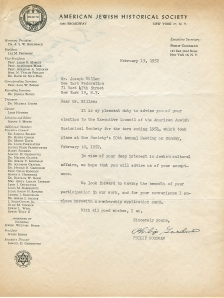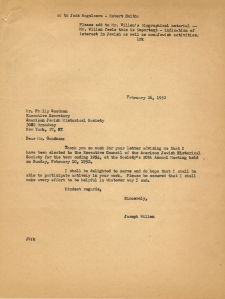Camping can play an important part of the formation of a personality and now we even have news from the Jewish Voice that Bob Dylan became who he is (including a soon-to-become recipient of the Presidential Medal of Freedom) due to the time he spent at Camp Herzl, the Jewish summer camp in Wisconsin.
Another entertainer (though not a prophet, a mystic or a poet), who owed a lot to the Jewish summer camp experience was Eddie Cantor—comedian, actor and singer, famous from the 1930s to the 1950s. Eddie Cantor initiated the “March of Dimes” fundraising campaign against polio, and is one of the very few real people depicted as a balloon in the Macy’s Thanksgiving Day Parade. Eddie Cantor (“Banjo Eyes”, born Edward Israel Iskowitz, 1892-1964) became an ardent supporter of Jewish camping in general and of the summer camp he attended as a child, Surprise Lake Camp, run by the Educational Alliance.
Orphaned at birth and raised by his grandmother, Cantor was able to avail himself of the camping services due to the program of scholarships awarded to children from poor families by the Federation of Jewish Philanthropies. Upon attaining fame and success as an entertainer, Eddie Cantor returned the favor with generous support of Jewish camps and camping for underprivileged children. As Jacob Birnbaum, former director of camps for the Educational Alliance says in his oral history interview, Eddie Cantor “provided more money, I think, than any other individual. And he refused to have his name on anything.”
The Camping Subseries materials at the UJA-Federation of New York collection contains a significant amount of materials about the Educational Alliance’s Surprise Lake Camp. The name of its first famous alum, Eddie Cantor, is mentioned in many documents and booklets. At this point, we have not come across any documents generated by Cantor himself with the UJA-Federation of New York collection. However, within the National Jewish Welfare Board collection, there is a great photograph of Cantor with some young campers and also there are some digitized items here at the Center for Jewish History (the YIVO Institute’s Milstein Family Jewish Communal Archive Project website) which give an idea of Eddie Cantor’s warm regard and care for the camps and campers:
- Photograph of Eddie Cantor and Jack Holman
- Eddie Cantor’s Solicitation Letter for Surprise Lake, April 18, 1945
- Invitational pamphlet for Surprise Lake, 1951
Other material related to Eddie Cantor from this collection or other collections at the Center for Jewish History can be found by searching on his name at access.cjh.org.








